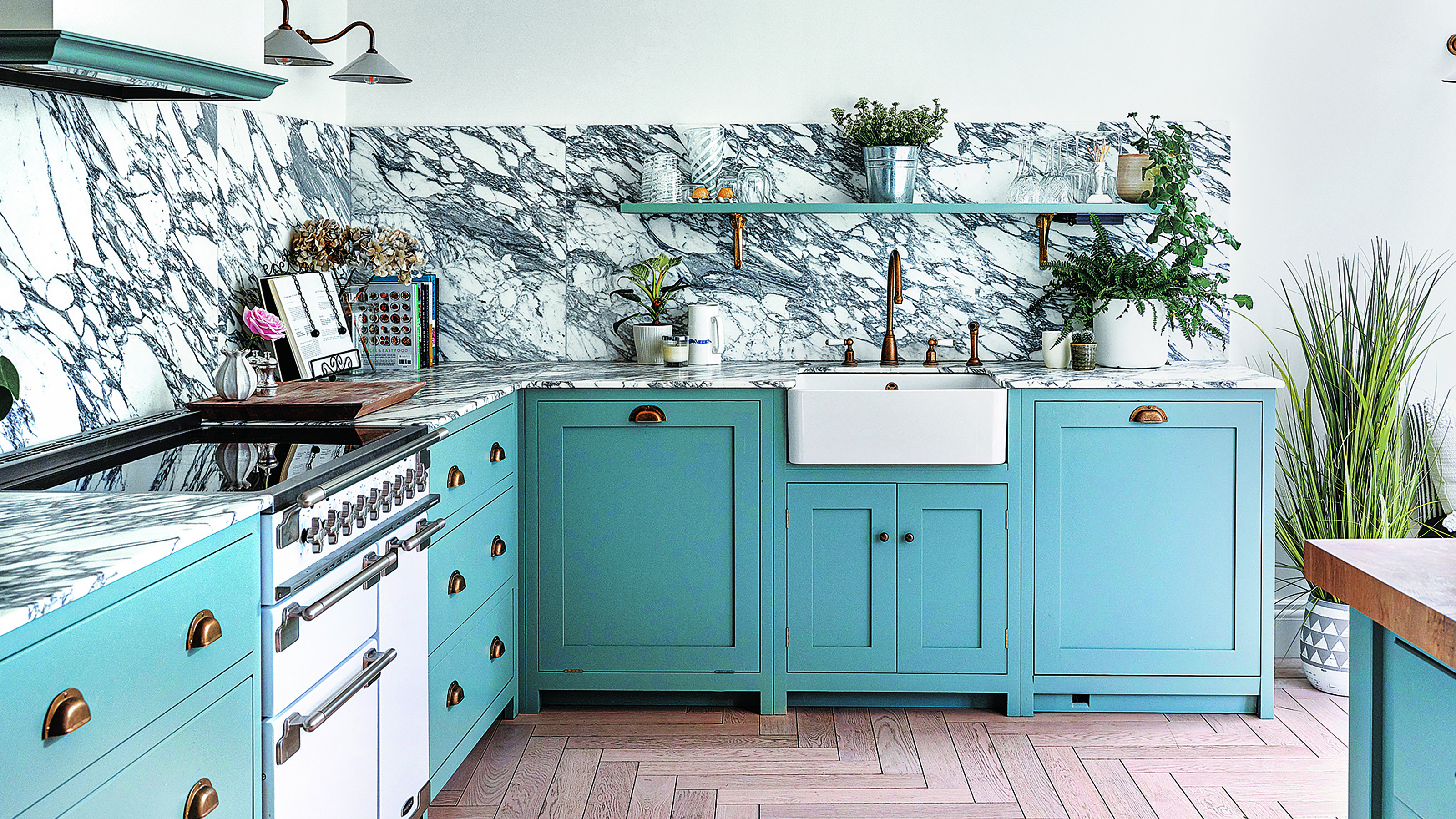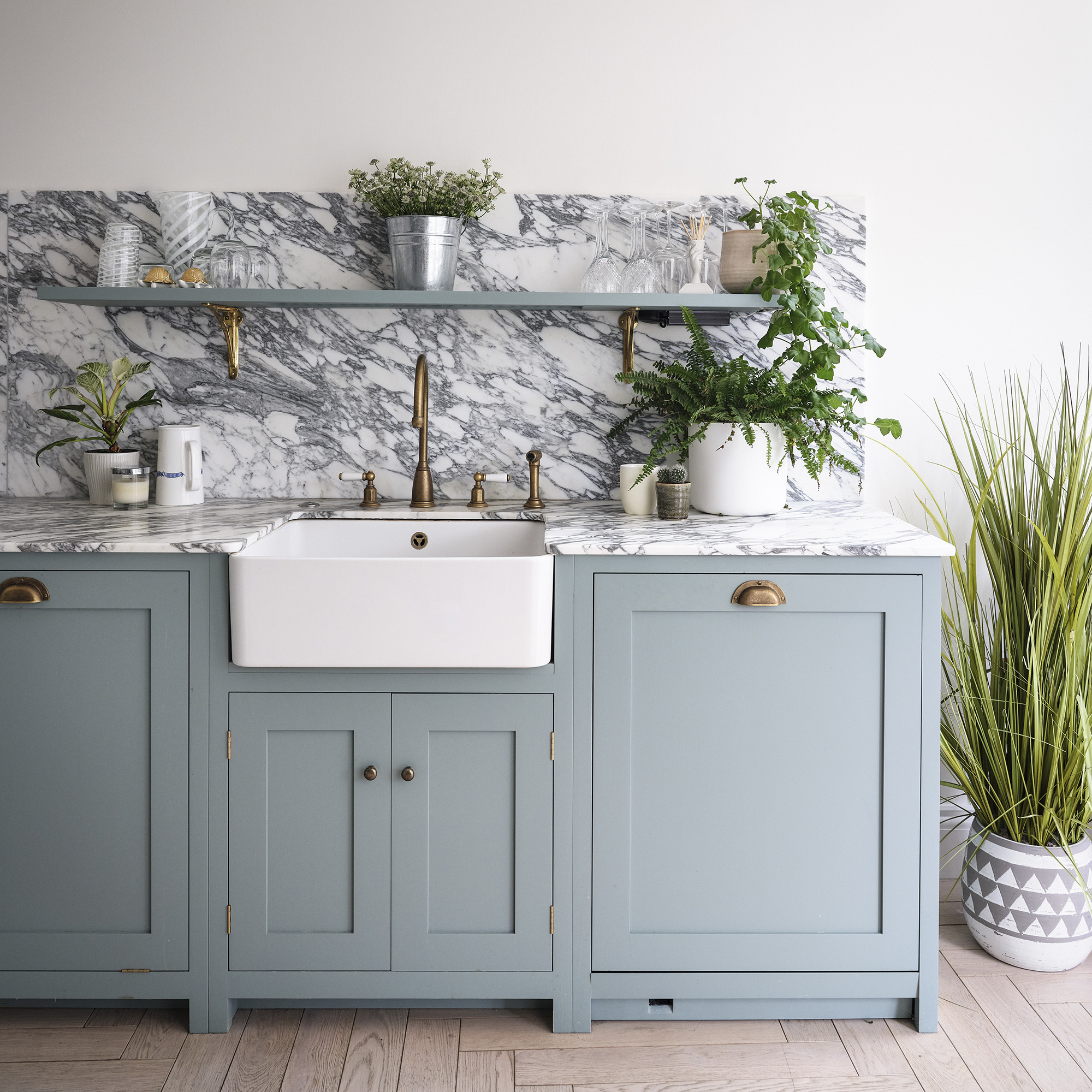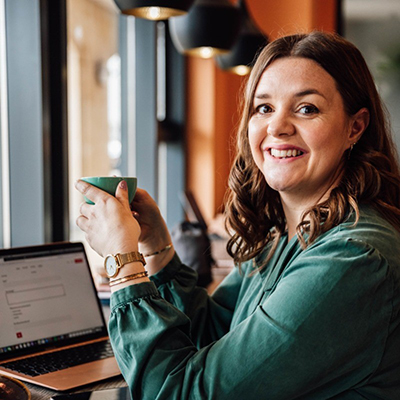5 clever tricks to get the look of a Butler sink in your kitchen for less
Love the look of this sink style? Here’s how to get it on a budget


Butler sink, Belfast sink or farmhouse sink – have you heard of them? Often used interchangeably but with subtle design differences, they all describe a style of kitchen sink that has a classic-style apron front where the front panel of the sink is visible at the front of the cabinet. But the classic sink can come at a cost, so how can you achieve the look of a Butler sink for less?
This style of sink often requires a slightly different arrangement of your cupboards to make room for the drop-fronted design, which can add to the cost of your kitchen makeover. But with clever thinking, savvy shopping and creative kitchen ideas, there are ways to get a Butler sink look for less. Fancy learning more? Come with us…

How to get the look of a Butler sink for less
When you imagine a space with a Butler sink, you might think of a traditional kitchen with lots of charm and character. We are here to say that while, yes, this type of kitchen sink works beautifully in such spaces, it can be a stylish addition to a more modern kitchen too. The original butler sink was made from fireclay ceramic, but these days you can achieve the same look through other materials – like stainless steel and copper to name just a couple – so you can create a unique look in your home.
‘A Belfast, or Butler, sink is not only timeless but looks stunning in modern and traditional kitchens. The large, deep bowls are also perfect for washing pots and pans that won’t fit in the dishwasher,’ says Jennifer Townsend, product marketing manager at Rangemaster.
Typically, a ceramic butler sink is a very heavy piece of kitchen kit, so units would need to be strong enough to bear the weight, plus they would need to be specially cut out to create space for it. This can all add to the cost of a new kitchen, so if you’re renovating your kitchen on a budget, we’ve found five nifty ways to do it for a little less.
1. Find a reclaimed Butler sink

So many original Butler sinks can be found at salvage and reclamation yards across the country, so it’s worth taking a trip to your local one. You may even be able to pick one up on online marketplaces like eBay or Gumtree, for example. Whatever you do, make sure to be armed with a tape measure. You’ll need to know the exact dimensions of your sink opening within your kitchen as well as the location of your plumbing outlets and tap.
However, Neill Taylor, owner of Watling Reclamation, says it should be easy to fit a reclaimed sink in a new kitchen design as they are imperial sizes which are still used today. ‘Over the years, the sizes have stayed the same,’ he explains. But it’s always best to double-check.
Sign up to our newsletter for style inspiration, real homes, project and garden advice and shopping know-how
When shopping, make sure to inspect the reclaimed sinks closely. ‘Check for any cracks in the sink or enamel – although these can be repaired, they can add extra character depending on the finished look required,’ says Neill.
‘Also check the threads aren’t damaged on the waste,’ he says. This can signify poor quality and it’s best to walk away if that’s the case.
2. Buy a freestanding design
There’s a rise in popularity for freestanding kitchen units – from portable islands and butcher blocks on wheels to entire runs of cupboards, including ones with a sink. This means the kitchen isn’t ‘fitted’ into the room like most modern kitchens, but more modular.
Brands like Huckleberry and The Plate Rack Co sell standalone units in varying sizes consisting of cupboards or drawers and a butler sink that can be positioned into your existing kitchen. You could even ask a local joiner to create a bespoke design or shop on Etsy for similar designs. Just make sure to check your chosen unit works with the location of your plumbing as rerouting is a costly exercise.
3. Choose a lookalike style

‘Sit-on Belfast sinks are the ultimate statement piece, but they are heavy and, if you aren’t replacing a sink like-for-like, you will need to cut the worktop for it to fit and create the iconic overhang,’ says Jennifer. ‘It’s a challenging task and may require modifying the cabinet to ensure it can support the weight of the sink.’
‘However, this isn’t really an option if you have laminate worktops (because water will blow or swell the laminate if it gets into the seal). Instead, opt for an inset fire-clay ceramic sink in the style of a Belfast model, such as the Hartland sink from Rangemaster which sits flush to the worktop rather than beneath it. It can slot into an existing sink cut-out, saving you from cutting or changing the worktop. Plus, it has a deep apron front profile and is safe to use with all worktop materials, including laminate,’ she says.
That being said, if you have your heart set on a traditional sit-on butler sink made from ceramic and your worktop choice is suitable – such as stone, composite or wood – why not balance the books by investing more in the sink and less on the units beneath?
4. Trick the eye
If you’re on a tight budget and are game for being a bit creative, you may be able to use your worktop material to create the illusion of a butler sink. How? Use the same material, for example, a granite worktop with attractive veining, to make an overhang over the front of the unit in front of the sink.
This idea will work with a typical undermounted sink but you’ll still need to account for the overhang in terms of where your cupboard doors are located. The doors will need to start lower down the unit.
5. Go for a different sink material

While white ceramic is traditional and the original choice, there are no rules for which material you should use for your sink. It all comes down to personal choice and what goes best with your kitchen, as well as cost.
‘Fire-clay ceramic, stainless steel and granite are the main material options to choose from,’ says Jennifer. ‘We recommend them all for their different hardwearing properties.’
Typically, white ceramic butler sink options will be the most cost-effective as they’re more widely available, but it’s worth shopping around. Materials such as stainless steel can provide a good, affordable alternative.
Or what about something a bit different such as copper which will develop a natural patina as it ages, marble or even concrete? Of course, each material will vary in cost, with marble at the higher end of the scale, but when used in small doses such as your kitchen sink, you may be able to make it work with your budget.
FAQs
Where should you position a sink in a kitchen?
Have an island in your kitchen? The age-old question is whether to have the sink or the hob on it. Or should you have your sink under a window overlooking the garden, or indeed by a wall?
There are no hard and fast rules when it comes to where you should position your sink in a kitchen. It really comes down to your use of the space and what will be most practical for you in day-to-day life.
So if you enjoy cooking and entertaining, you may prefer the hob on an island instead of the sink so you can interact with guests rather than have a central point loaded with dirty dishes. If you wash dishes by hand and like a view while doing so, a window-side location is a good idea. Or if you’re washing while kids play outside, you’ll be able to keep an eye on them while you clear up.
Think about how you use the kitchen each day and decide what arrangement will work best for your lifestyle.

Kitchen materials to avoid
All sink materials, including fire-clay, stainless steel and granite, will give long-lasting performance so there is no bad choice to make. Sinks are true workhorses in the kitchen dealing with a variety of chores but, when treated with normal care and cleaning, all materials will give years of good service.
Moulded and fired at high temperatures, fire-clay ceramic sinks are robust and hygienic thanks to the high-gloss glazed finish, which also provides strength as it is highly resistant to heat, stains and scratches. The smooth surface makes fire-clay ceramic sinks easy to clean as microbes and stains just wipe away.
It’s more about getting the right size and function for your household, so think about how many dishes you’ll likely wash up, the size of your chopping boards and oven trays as well as if you might need to use the sink to wash the dog.
‘After that, think about the choice of material, whether stainless steel, a metallic finish, ceramic or granite, the design and colour is driven according to your personal style,’ says Jo Sargent, sales and marketing director at Franke UK.

Lindsay Blair is an editor, writer & content consultant with a focus on home design, interiors & lifestyle. Previously editor KBB Magazine and thesethreerooms.com, she has also contributed to The Times, Ideal Home, Build It & more.